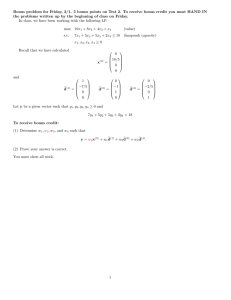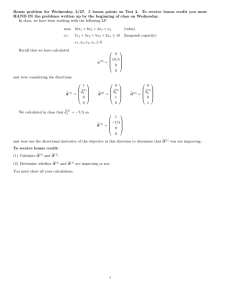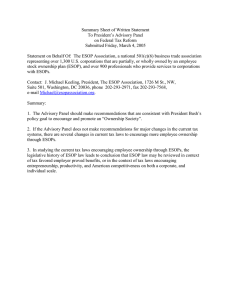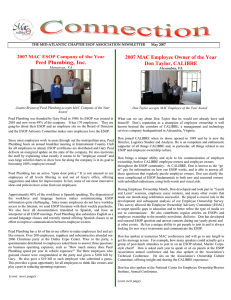Chapter 18 ESOP/S B P
advertisement
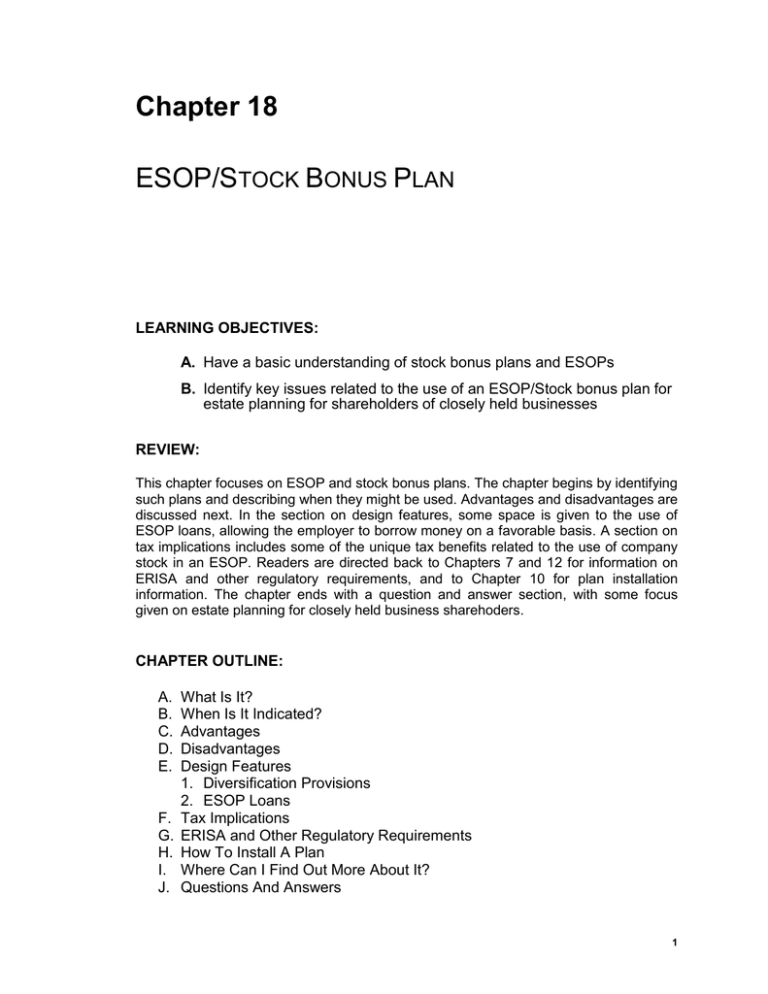
Chapter 18 ESOP/STOCK BONUS PLAN LEARNING OBJECTIVES: A. Have a basic understanding of stock bonus plans and ESOPs B. Identify key issues related to the use of an ESOP/Stock bonus plan for estate planning for shareholders of closely held businesses REVIEW: This chapter focuses on ESOP and stock bonus plans. The chapter begins by identifying such plans and describing when they might be used. Advantages and disadvantages are discussed next. In the section on design features, some space is given to the use of ESOP loans, allowing the employer to borrow money on a favorable basis. A section on tax implications includes some of the unique tax benefits related to the use of company stock in an ESOP. Readers are directed back to Chapters 7 and 12 for information on ERISA and other regulatory requirements, and to Chapter 10 for plan installation information. The chapter ends with a question and answer section, with some focus given on estate planning for closely held business sharehoders. CHAPTER OUTLINE: A. B. C. D. E. F. G. H. I. J. What Is It? When Is It Indicated? Advantages Disadvantages Design Features 1. Diversification Provisions 2. ESOP Loans Tax Implications ERISA and Other Regulatory Requirements How To Install A Plan Where Can I Find Out More About It? Questions And Answers 1 Chapter 18 K. Chapter Endnotes FEATURED TOPICS: ESOP Stock Bonus Plan FIGURE: Figure 18.1 ESOP Loan Transaction CFP® CERTIFICATION EXAMINATION TOPIC: Topic 61: Types of retirement plans B. Types and basic provisions of qualified plans 1. Defined contribution c. Profit sharing 4) Stock bonus plan 5) Employee stock ownership plan (ESOP) COMPETENCY: Upon completion of this chapter, the student should be able to: 1. Have a basic understanding of stock bonus plans and ESOPs 2. Identify key issues related to the use of an ESOP/Stock bonus plan for estate planning for shareholders of closely held businesses KEY WORDS: ESOP, stock bonus plan, ESOP loan DISCUSSION: 1. Discuss unique tax implications of ESOPs/stock bonus plans. Chapter 18 2. Discuss the legal and regulatory requirements that apply to ESOPs as compared or contrasted to those more generally relating to stock bonus plans. QUESTIONS: 1. Which of the following are reasons why an employer might use an ESOP/stock bonus plan? (1) to guarantee specific retirement income amounts for employees (2) to provide a tax-advantaged means for employees to acquire company stock (3) to allow the company to borrow money for business needs (4) to broaden company ownership to help prevent a hostile takeover a. b. c. d. (1) only (1) and (2) only (1) (2) and (3) only (2) (3) and (4) only Chapter 18, p. 161 2. Which of the following correctly identifies the ESOP/stock bonus plan requirement that an employer must repurchase stock that is not traded on an established market? a. b. c. d. put option ESOP loan deemed IRA option ERISA 10% requirement Chapter 18, p. 162 3. Which of the following may be required in order for a C corporation to be able to deduct dividends paid on stock acquired with an ESOP loan? (1) dividends must be paid in cash (2) dividends must be used to make payments on certain loans incurred to acquire employer stock (3) dividends must be paid to the plan and distributed within 90 days to plan participants or beneficiaries (4) dividends must be guaranteed a. (1) and (3) only Chapter 18 b. (1) (2) and (3) only c. (2) (3) and (4) only d. (1) (2) (3) and (4) Chapter 18, pp. 163-64 4. Which of the following are estate planning-related problems that an ESOP or stock bonus plan may help to reduce or eliminate? (1) plan income is taxed at the lower 15% marginal tax rate (2) funds accumulated by the corporation for the purchase of stock at death may result in exposure to the accumulated earnings tax (3) receipt by the corporation of life insurance proceeds may trigger the corporate AMT (4) insurance owned by the corporation to fund a buyout increases corporate value, and thereby, federal estate tax a. b. c. e. (1) and (3) only (1) (2) and (3) only (2) (3) and (4) only (1) (2) (3) and (4) Chapter 18, pp. 164-65 ANSWERS: 1. d 2. a 3. b 4. c

